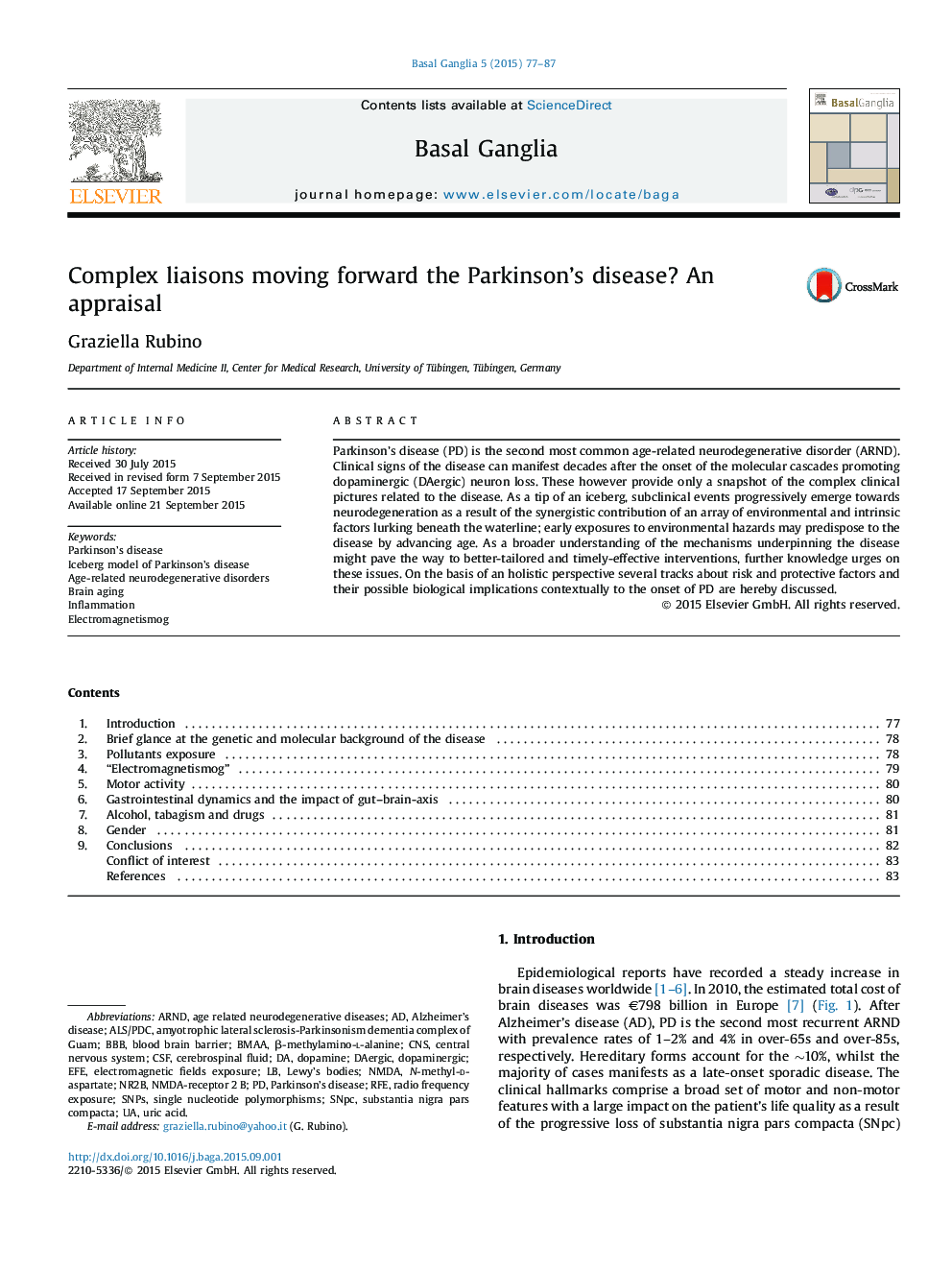| Article ID | Journal | Published Year | Pages | File Type |
|---|---|---|---|---|
| 3036031 | Basal Ganglia | 2015 | 11 Pages |
Abstract
Parkinson's disease (PD) is the second most common age-related neurodegenerative disorder (ARND). Clinical signs of the disease can manifest decades after the onset of the molecular cascades promoting dopaminergic (DAergic) neuron loss. These however provide only a snapshot of the complex clinical pictures related to the disease. As a tip of an iceberg, subclinical events progressively emerge towards neurodegeneration as a result of the synergistic contribution of an array of environmental and intrinsic factors lurking beneath the waterline; early exposures to environmental hazards may predispose to the disease by advancing age. As a broader understanding of the mechanisms underpinning the disease might pave the way to better-tailored and timely-effective interventions, further knowledge urges on these issues. On the basis of an holistic perspective several tracks about risk and protective factors and their possible biological implications contextually to the onset of PD are hereby discussed.
Keywords
NMDAβ-methylamino-l-alanineALS/PDCDAergicEFERFENR2BARNDN-methyl-d-aspartateBMAASNPsSNpcUric acidinflammationAlzheimer’s diseaseParkinson’s diseaseParkinsońs diseasesubstantia nigra pars compactaCNSDopamineDopaminergicblood brain barrierBBBcentral nervous systemCerebrospinal fluidCSFSingle nucleotide polymorphismsBrain aging
Related Topics
Life Sciences
Neuroscience
Neurology
Authors
Graziella Rubino,
